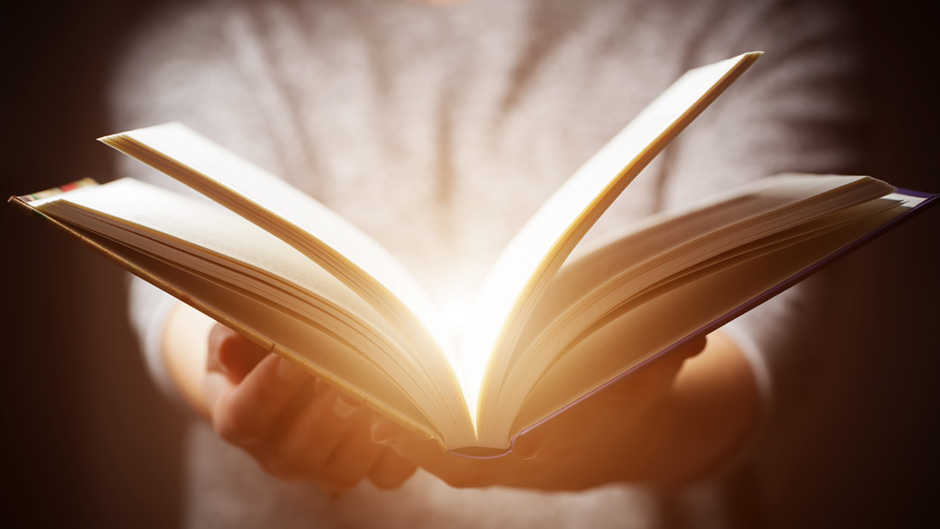When reading a poem or novel, we are participating in an act of empathy, suggests Chantel Acevedo, author and professor of English in the University of Miami College of Arts and Sciences.
“We’re stepping into the life of someone else, which naturally makes one think of our shared humanity,” said Acevedo, also the senior associate dean for Academic Affairs. “It’s the opposite of divisiveness, the opposite of antagonistic response, which seems to be the primary mode of much of our other media today.”
John Paul Russo, professor of Classics and English, likes to take his reading slow. He follows the advice of a high school teacher who encouraged reading books over an extended period to observe how our own personalities and perceptions change over time.
“Our interpretations of the characters change significantly with the passing years because we change,” Russo said. “It is like looking through a kaleidoscope—the colorful bits and pieces are the same, but the patterns change.”
Russo first read Leo Tolstoy’s War and Peace at his teacher’s suggestion and has returned to read it several times at different stages to appreciate how his interpretations of the characters changed as his own life did.
In a French class in college, Russo read Swann’s Way, the first of Marcel Proust’s seven-volume opus Remembrance of Things Past, and after graduate school—when he had more time to savor the reading—tackled the rest of the series.
“I lived with a cast of characters who to this day seem more real than some of the people I knew at the time,” he recalled. “I forget who said, ‘the French know the heart,’ but surely Proust must be one of the reasons.”
While he enjoys a long read, Russo recognizes that the length of a book or read does not determine its impact.
“Long books are not always long in pages, but in depth of thought and extent of time required for interpreting them,” Russo said. Thomas Mann’s “Death in Venice” and Henry James’s “Daisy Miller” are novellas, barely 70 pages. Yet they have the density of a three-volume Victorian novel. The relatively short novels by Virginia Woolf—"Mrs. Dalloway,” “To the Lighthouse,” “The Waves”—have the same effect.
National Reading Month, coordinated since 1997 by the National Education Association and celebrated in March, kicked off March 2, the birthday of the beloved and fabulously quirky author Theodor Seuss Geisel—more famously known as Dr. Seuss. Schools, libraries, and communities host special events and activities throughout the month to spread the joy of reading.
Below are some favorite reading selections of University faculty and staff members:
“The Hurting Kind,” the latest collection of poems by Ada Limón, poet laureate of the U.S. and whom we were so lucky to have on campus last week as a speaker in the Stanford Distinguished Lecture series, is a powerhouse of a book worth reading again and again. Limón consistently writes poems that help me see the world in new and thrilling ways.
- Chantel Acevedo, author and director of the M.F.A. program in Creative Writing.
“The Alternatives” by Caoilinn Hughes. This novel about geological, political, and emotional fault lines follows the lives of four Irish sisters, all with Ph.Ds, who meet up in rural northwest Ireland after the oldest sibling, Olwen, abruptly leaves her family and her job as a geology professor in Dublin. It’s a novel about experts who feel lost in a world that doesn’t value expertise anymore and four sisters who care for each other but who are all still coping in their different ways with the tragic death of their parents when they were young. The sisters’ conversations are funny, moving, urgent, scintillating, and the novelist’s expertise helped restore a little bit of faith in humanity for me in our moment of omni-crisis.
– Tim Watson, professor of English
“The Mists of Avalon” by Marion Zimmer Bradley is a novel on the Arthurian legends, told through the eyes of the women who shaped history from behind the scenes. I love how it weaves together the mystical traditions of the Druids with the rise of Christianity in the British Isles, showing the tension and transformation of a changing world. The story, told from a woman's point of view, made it feel more intimate and powerful, giving a better picture to characters who are often minimized in traditional story telling. It’s a book that stayed with me long after I turned the last page.
- Leticia Tejeda, communications manager, University Communications.
“The Alchemist” by Paulo Coehlo. I first read this book during a transitional period. The word, "maktub," was repeated often through the book, and though I'm not sure what language it is, it means, "it is written." It was a good reminder to enjoy my journey and the opportunities that presented themselves to me because no matter what I decided, what was meant for me would always be available to me. I've read it often over the years when I need a reminder to embrace the journey.
– Michelle Tulande, assistant director of communications, Miami Herbert Business School.
“Demon Copperhead” by Barbara Kingsolver. I recently read Kingsolver’s book and it changed the way I think about addiction. This book also opened my eyes to the root causes of many of the challenges the Appalachian region faces.
- Kyra Gurney, senior communications specialist, College of Arts & Sciences
“Jane Eyre” by Charlotte Brontë. This is a tale that changed me. The heroine’s honesty, hard work, and bravery was so inspiring. She was so poor and abused in her early life, but she did not let that define her. Jane Eyre is my heroine.
- Barbara Gutierrez, director University Communications.

